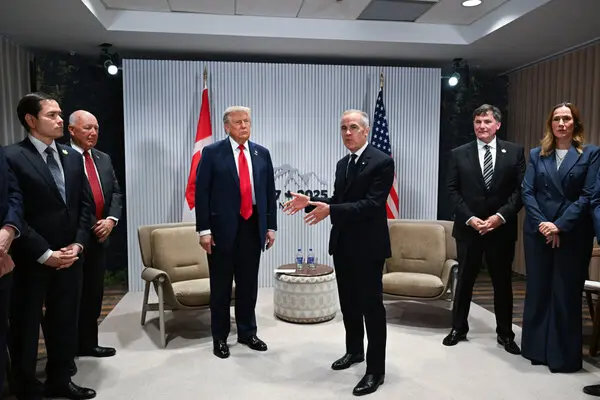AI 171 Crash: Boeing's failure or Pilot's Fault?
Ravish Kumar and BBC have already blamed pilots.
Dead pilots are easiest to blame and Boeing is a big fish to be saved.
Read this thread explaining everything that could have caused it. Pilots are least likely.
Ravish Kumar and BBC have already blamed pilots.
Dead pilots are easiest to blame and Boeing is a big fish to be saved.
Read this thread explaining everything that could have caused it. Pilots are least likely.

What all we know from AAIB's released report:
Seconds after takeoff:
Captain asks: " Why did you cut off engine?"
First Officer: " I didn't do"
They attempted restart of engine, Engine 1 show signs of regaining thrust but Engine 2 doesn't start properly.
And BBC jumped into blaming pilots and giving clean chit to Boeing.
But Look at pilot's credentials before flying AI171:
1. Pilot's breathe analyser : Negative
2. Pilots had proper rest before the flight.
3. Combined flying experience of both pilots on Boeing 787 : 9000+ hours.
So there is no decision fatigue. Neither they were new to the cockpit.
There are more details to it:
Seconds after takeoff:
Captain asks: " Why did you cut off engine?"
First Officer: " I didn't do"
They attempted restart of engine, Engine 1 show signs of regaining thrust but Engine 2 doesn't start properly.
And BBC jumped into blaming pilots and giving clean chit to Boeing.
But Look at pilot's credentials before flying AI171:
1. Pilot's breathe analyser : Negative
2. Pilots had proper rest before the flight.
3. Combined flying experience of both pilots on Boeing 787 : 9000+ hours.
So there is no decision fatigue. Neither they were new to the cockpit.
There are more details to it:

AAIB has mentioned no fuel contamination, no bird strike.
AAIB has also mentioned that Ram engine got deployed based on CCTV footage.
If there was no fuel contamination, no bird strike what moved both engines to CUTOFF state.
Why Engine 2 didnt/ start properly?
Are there more automations which could have caused this?
What is the history of 787's malfunctioning before this?
Let's understand take off procedure in simplest term and the systems which control Boeing engines:
AAIB has also mentioned that Ram engine got deployed based on CCTV footage.
If there was no fuel contamination, no bird strike what moved both engines to CUTOFF state.
Why Engine 2 didnt/ start properly?
Are there more automations which could have caused this?
What is the history of 787's malfunctioning before this?
Let's understand take off procedure in simplest term and the systems which control Boeing engines:

We need to understand 3 speeds:
V1 ( Decision Speed): The speed on runway before which pilot can abort take off and stay on runway.. After this pilot can't abort take off because not enough runway would be left.
Vr: The speed of rotation ie the speed around which nose starts to lift.
V2: The minimum speed that must be achieved by the time the aircraft reaches 35 feet above the runway, ensuring it can safely climb with one engine inoperative.
For AI171, we can assume that flight was able to get to V2 speed and at least one engine was working till that time.
Ground report says ...
V1 ( Decision Speed): The speed on runway before which pilot can abort take off and stay on runway.. After this pilot can't abort take off because not enough runway would be left.
Vr: The speed of rotation ie the speed around which nose starts to lift.
V2: The minimum speed that must be achieved by the time the aircraft reaches 35 feet above the runway, ensuring it can safely climb with one engine inoperative.
For AI171, we can assume that flight was able to get to V2 speed and at least one engine was working till that time.
Ground report says ...

....both engine were operational.
No birdstrike during take off.
There is no reason why co-pilot will cutoff the engine.
That's why co-pilot sounds surprised when he was asked if he cut off the engines.
But interesting thing is: During restart attempt, 2nd engine doesn't recover properly.
Boeing has something called engine secure procedure.
pilots need to secure damage engine by cutting off.
You can assume, pilot could have tried cutoff one of the engine but report says both engine were operational and no bird strike. So why co-pilot would even think of that procedure.
Now comes another Boeing sensor and automation...
No birdstrike during take off.
There is no reason why co-pilot will cutoff the engine.
That's why co-pilot sounds surprised when he was asked if he cut off the engines.
But interesting thing is: During restart attempt, 2nd engine doesn't recover properly.
Boeing has something called engine secure procedure.
pilots need to secure damage engine by cutting off.
You can assume, pilot could have tried cutoff one of the engine but report says both engine were operational and no bird strike. So why co-pilot would even think of that procedure.
Now comes another Boeing sensor and automation...
TCMA and FADEC:
TCMA: Thrust Control Malfunction Accommodation
FADEC: Full Authority Digital Engine Control
Foreign experts have raised question on these two.
Here is why:
Software-Triggered Engine Shutdown: The TCMA is designed to detect if the aircraft is on the ground and, if so, can automatically reduce engine thrust or even shut down the engines via the FADEC, without pilot intervention.
If this system erroneously determines the aircraft is on the ground during takeoff or initial climb, it could command a catastrophic loss of thrust at a critical moment
There are precedents:
TCMA: Thrust Control Malfunction Accommodation
FADEC: Full Authority Digital Engine Control
Foreign experts have raised question on these two.
Here is why:
Software-Triggered Engine Shutdown: The TCMA is designed to detect if the aircraft is on the ground and, if so, can automatically reduce engine thrust or even shut down the engines via the FADEC, without pilot intervention.
If this system erroneously determines the aircraft is on the ground during takeoff or initial climb, it could command a catastrophic loss of thrust at a critical moment
There are precedents:

Known Precedents and Software Flaws: There have been previous incidents, including a 2019 ANA (Japan) 787 event, where a software flaw in the TCMA-FADEC interaction led to an uncommanded dual engine rollback.
The U.S. NTSB formally acknowledged this as a software design flaw, and corrective actions were ordered for 787s.
Critical Control Authority: The FADEC system controls all aspects of engine performance, including the high-pressure engine-side fuel shutoff valve.
The TCMA can instruct the FADEC to shut down the engine if it senses a malfunction or misinterprets the aircraft's status.
The U.S. NTSB formally acknowledged this as a software design flaw, and corrective actions were ordered for 787s.
Critical Control Authority: The FADEC system controls all aspects of engine performance, including the high-pressure engine-side fuel shutoff valve.
The TCMA can instruct the FADEC to shut down the engine if it senses a malfunction or misinterprets the aircraft's status.
Unexplained Fuel Cutoff Switch Movement:
In the AI171 crash, both engine fuel cutoff switches moved from RUN to CUTOFF within one second, immediately after takeoff, with neither pilot claiming responsibility.
The switches are designed to prevent accidental movement, and simultaneous manual activation is highly unlikely
Experts note that a computer-triggered thrust reduction or shutdown would leave distinct signatures in the flight data recorder, which investigators are now analyzing for evidence of such an event.
There are more details:
In the AI171 crash, both engine fuel cutoff switches moved from RUN to CUTOFF within one second, immediately after takeoff, with neither pilot claiming responsibility.
The switches are designed to prevent accidental movement, and simultaneous manual activation is highly unlikely
Experts note that a computer-triggered thrust reduction or shutdown would leave distinct signatures in the flight data recorder, which investigators are now analyzing for evidence of such an event.
There are more details:
Right engine was replaced in March 2025 while left was replaced in 2023 and scheduled for maintenance in 2025 December.
As per Air India Engines had clean history.
If engines were all okay, fuel was not contaminated then why engines were in cut off state that too both.
Ram Air Turbine was deployed. It means aircraft was missing bare minimum electrical supply.
But Ram Engine can't do anything at low speed. Its turbine rotates based on air pressure created during high speed flight.
If we add all together, nothing adds up.
Why:
As per Air India Engines had clean history.
If engines were all okay, fuel was not contaminated then why engines were in cut off state that too both.
Ram Air Turbine was deployed. It means aircraft was missing bare minimum electrical supply.
But Ram Engine can't do anything at low speed. Its turbine rotates based on air pressure created during high speed flight.
If we add all together, nothing adds up.
Why:

Pilots credential doesn't indicate of any fatigue or experience issue.
They were caught surprised why engines were in cutoff stage.
Cutoff switch is not like phone's touch screen but a mechanical switch to be pulled back that too twice.
Engines were in good enough state as per Air India and report. But Engine 2 didn't restart properly.
Bird strike was ruled out. No damage to engine for even pilot to commit error of wrongly putting one engine in cut off state.
There are only two other possibilities pending:
Boeing systems faltered as their history also suggests.
Was cockpit accessed by anyone apart from pilots just after takeoff: Highly unlikely.
Was there any sabotage done during ground maintenance work?
Fuel or anything which caused engines to malfunction and TCMA FADEC kicked in?
None of these suggest Pilots were at fault.
They were caught surprised why engines were in cutoff stage.
Cutoff switch is not like phone's touch screen but a mechanical switch to be pulled back that too twice.
Engines were in good enough state as per Air India and report. But Engine 2 didn't restart properly.
Bird strike was ruled out. No damage to engine for even pilot to commit error of wrongly putting one engine in cut off state.
There are only two other possibilities pending:
Boeing systems faltered as their history also suggests.
Was cockpit accessed by anyone apart from pilots just after takeoff: Highly unlikely.
Was there any sabotage done during ground maintenance work?
Fuel or anything which caused engines to malfunction and TCMA FADEC kicked in?
None of these suggest Pilots were at fault.

• • •
Missing some Tweet in this thread? You can try to
force a refresh
























